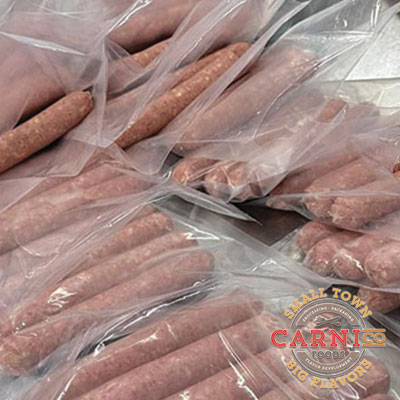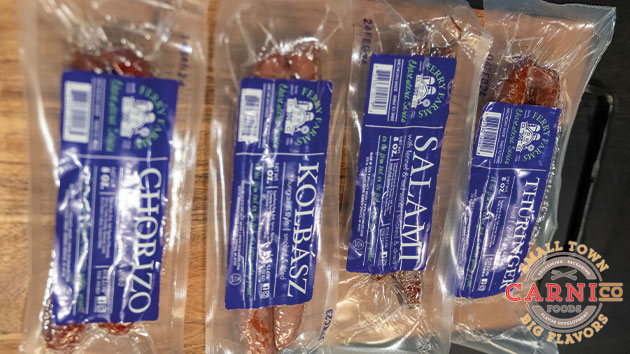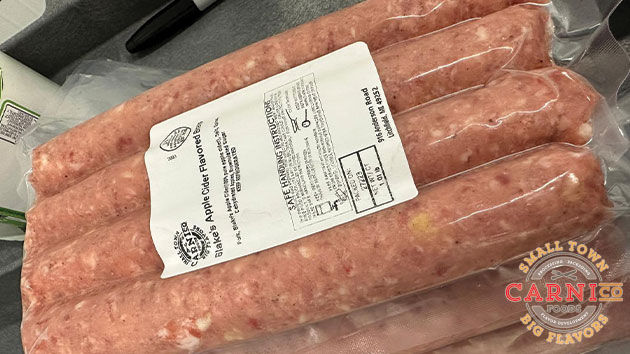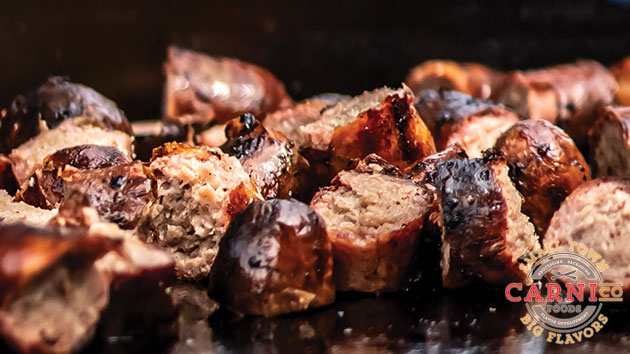Secondary Packaging
Carnico Foods
About Our Secondary Packaging

In the meat packing industry, secondary packaging plays a crucial role in ensuring that beef and pork products are safely transported and stored. Secondary packaging refers to the materials and containers that are used to protect and group individual meat products, such as cuts of beef and pork, before they are placed in the primary packaging.
Secondary packaging can come in many forms, including cardboard boxes, plastic containers, vacuum-sealed bags, and shrink-wrapped trays. The choice of secondary packaging depends on several factors, such as the type of meat product being packaged, the intended storage and transportation conditions, and the desired shelf life of the product.
One of the primary reasons for using secondary packaging in the meat packing industry is to prevent contamination and cross-contamination of the meat products. Secondary packaging acts as a barrier between the meat and the outside environment, protecting it from physical damage, moisture, and microorganisms that can cause spoilage or foodborne illnesses.
For example, vacuum-sealed bags are commonly used for beef and pork products that will be stored in refrigerated or frozen conditions. The vacuum sealing process removes air from the bag, which slows down the growth of bacteria and other microorganisms that can cause spoilage. The bags also provide a barrier against moisture and oxygen, which can further extend the shelf life of the product.
Cardboard boxes are another popular choice for secondary packaging in the meat packing industry. These boxes can be custom-sized to fit the specific meat products being packaged and are often used to group several cuts of meat together for transport and storage. The boxes provide a sturdy, protective barrier that prevents damage to the meat during handling and transportation.
Plastic containers are also commonly used in the meat packing industry, particularly for ground beef and pork products. These containers provide an airtight seal that helps to prevent the growth of bacteria and other microorganisms. They are also easy to stack and transport, making them an ideal choice for large-scale distribution.
In addition to protecting the meat products, secondary packaging can also provide valuable marketing and branding opportunities. Custom-designed packaging can help to differentiate a company's products from competitors and create a strong brand identity. This is particularly important in the highly competitive meat packing industry, where companies are constantly looking for ways to stand out and attract customers.
In conclusion, secondary packaging is a critical component of the meat packing industry. It helps to ensure that beef and pork products are safely transported and stored, while also providing valuable marketing opportunities. By choosing the right materials and containers for their products, meat packing companies can ensure that their products reach customers in the best possible condition, while also building a strong brand identity.
Our Services

Secondary Packaging
Carnico Foods excels in providing premium secondary packaging solutions for meats, ensuring both the quality and freshness of their products remain unparalleled.

Private Labeling
With a commitment to quality and customization, Private Labeling offers tailored branding solutions that allow businesses to showcase their unique identity and product line with exceptional packaging and labeling options.

Co-Packaging
Co-packaging specialists at Carnico Foods expertly collaborate with businesses to provide efficient and customized secondary packaging solutions for meats, guaranteeing the preservation of product quality and freshness.

Flavor & Recipe Development
Flavor & Recipe Development at Carnico Foods is a culinary journey of innovation, where our team of experts crafts delightful and unique tastes, creating delectable recipes that redefine the art of gastronomy.

